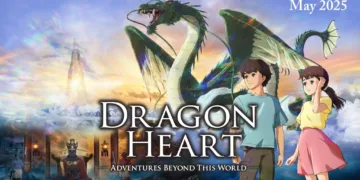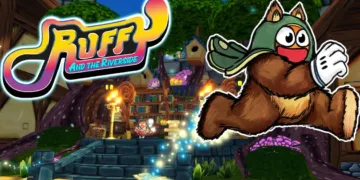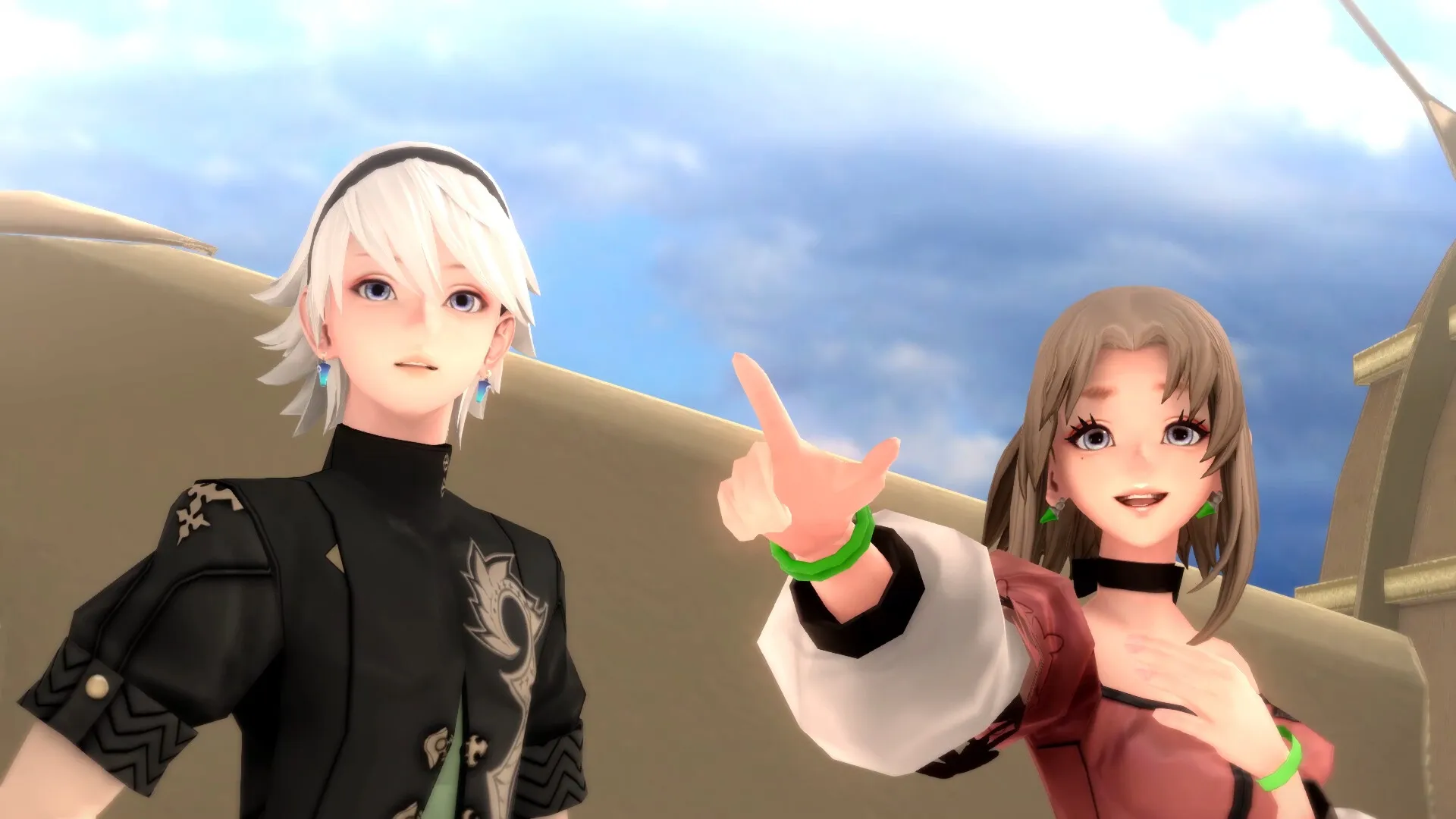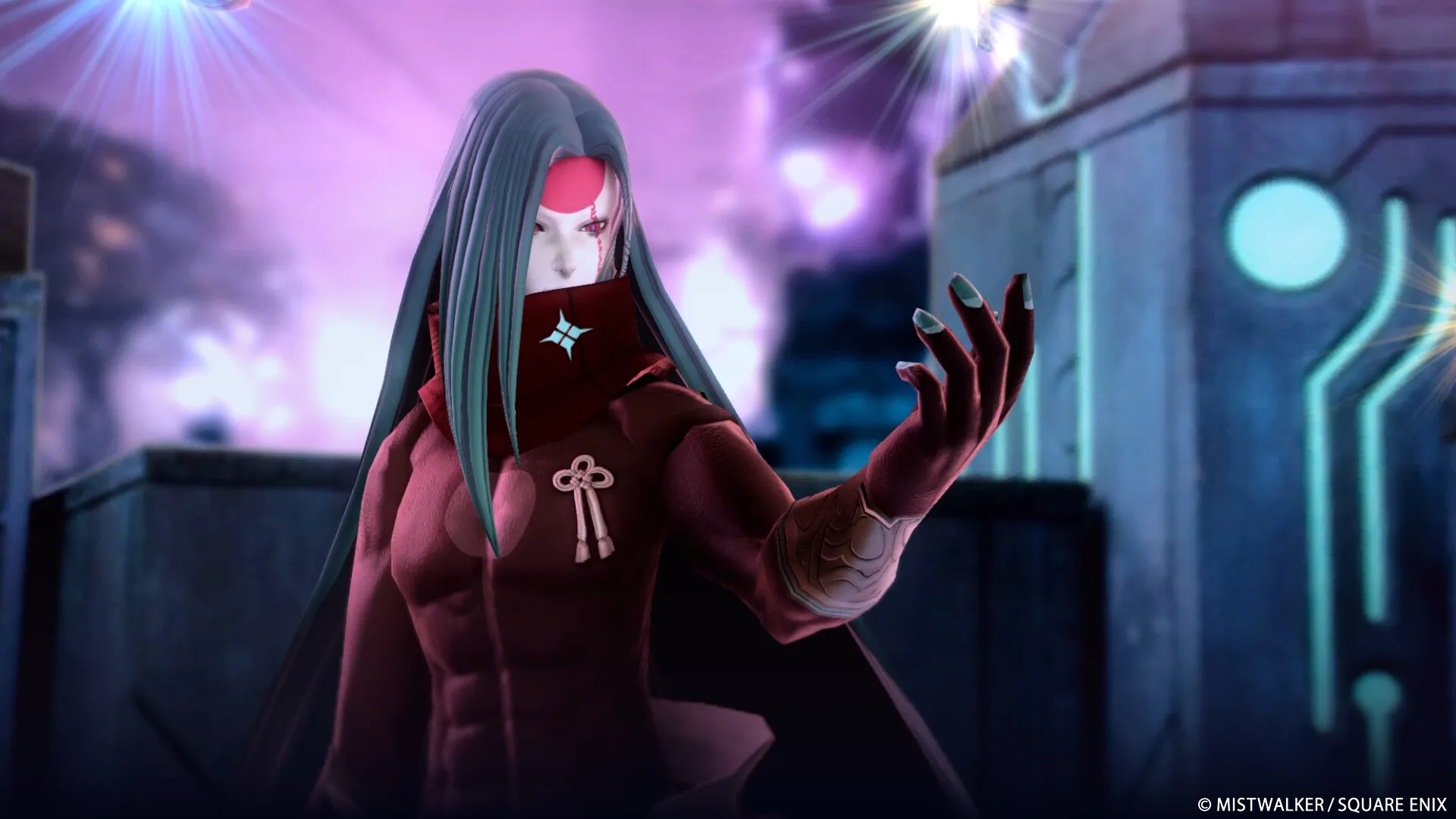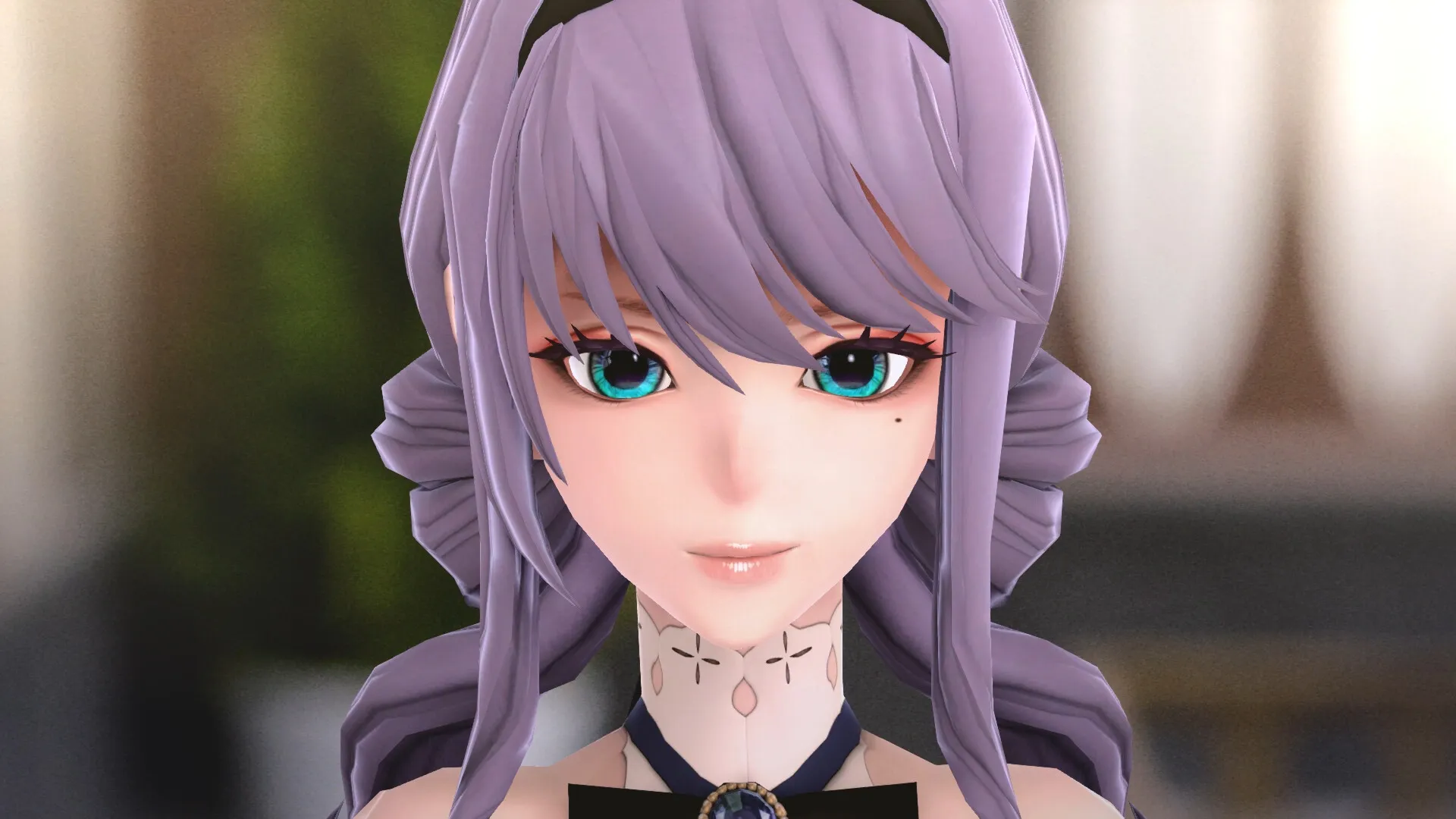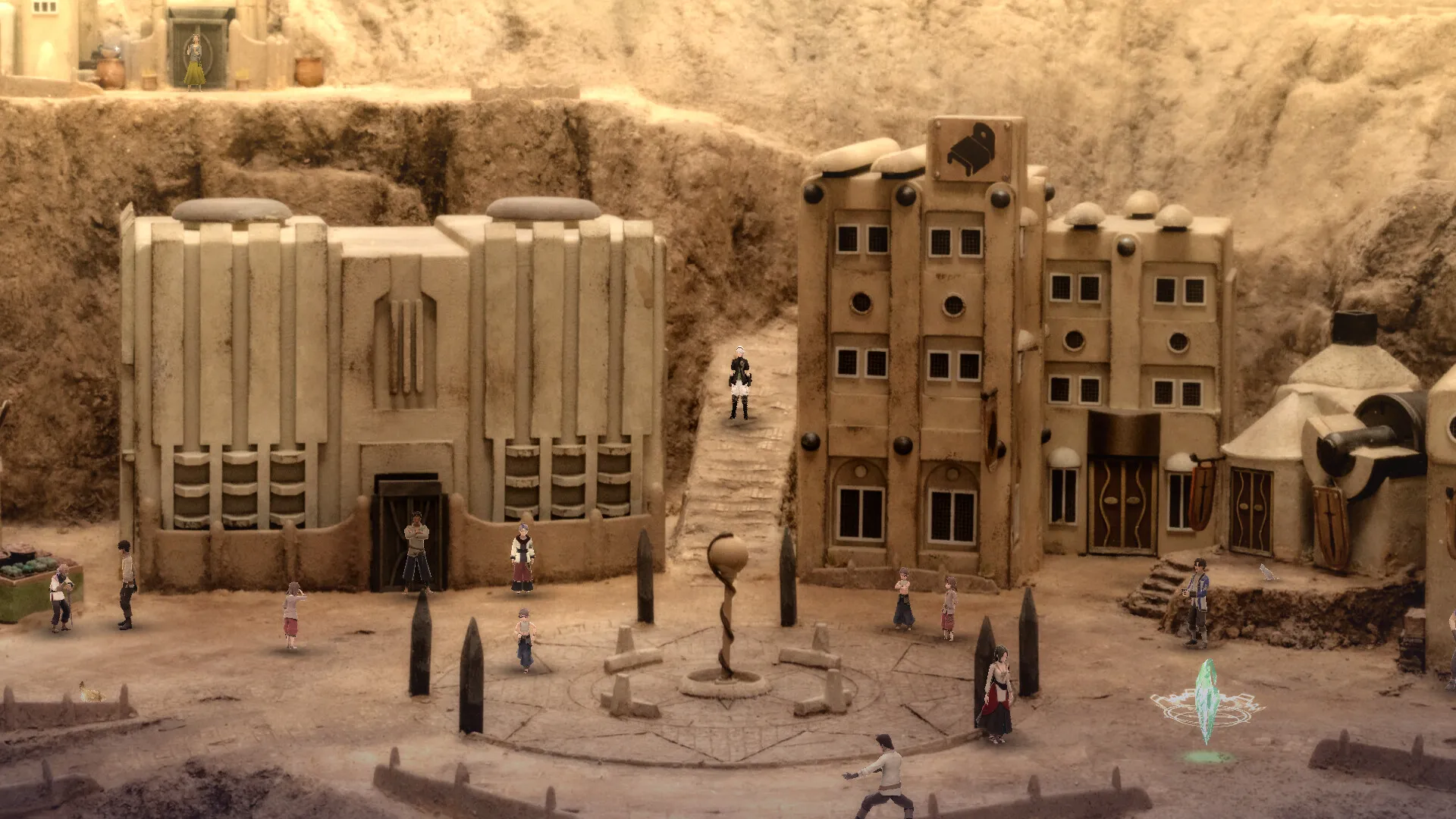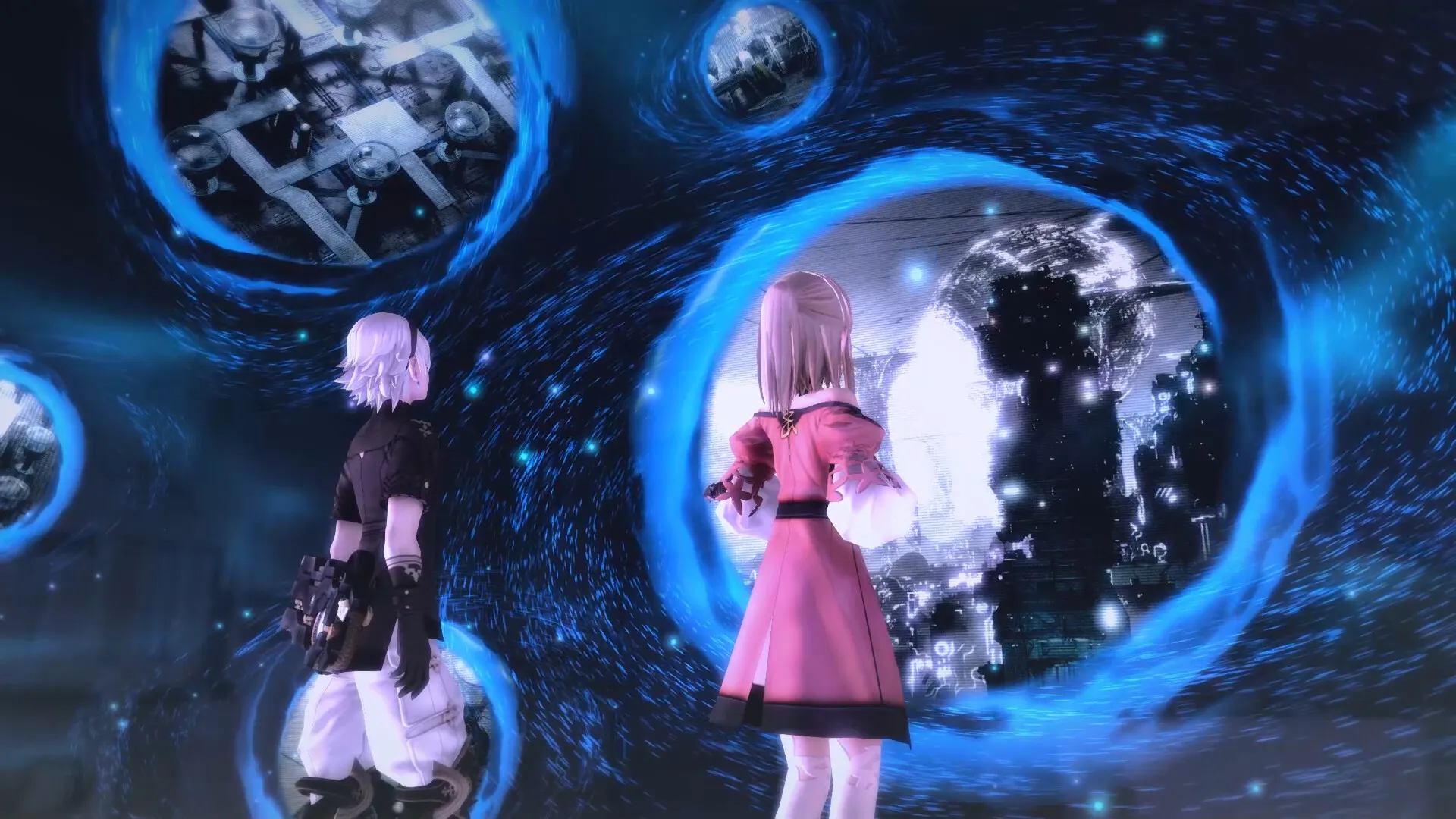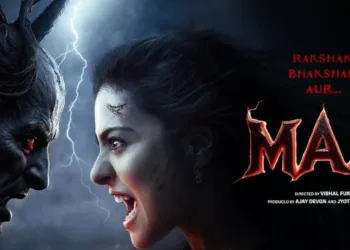Fantasian Neo Dimension is a new take on the original game that came out on Apple Arcade in 2021. It was made by Mistwalker and led by Hironobu Sakaguchi. With this release, the game is available on consoles and PC, improving accessibility and inviting a larger audience to experience its distinctive mix of nostalgia and innovation.
The game stays true to its RPG roots while experimenting with new gameplay mechanics, with music by the legendary Nobuo Uematsu, who is best known for his work on the Final Fantasy series.
The story’s main character is Leo, who wakes up in the Machine Realm and goes on a quest in the Human Realm. Reminiscent of titles like Final Fantasy VI, this classic setup echoes well-known JRPG elements. Leo teams up with Kina, a healer with a strong connection to nature.
Together, they face Vam the Malevolent, an old enemy threatening their world. The narrative alternates between fast pacing and character-driven sections, luring players into themes of identity and humanity while utilizing hand-made dioramas for a visually arresting aesthetic. Fantasian Neo Dimension does a good job of combining old and new, offering a new twist on traditional RPG stories.
Navigating a Rich RPG Landscape
The world of Fantasian Neo Dimension is beautifully made, and players are encouraged to explore it with the game’s unique use of hand-made dioramas. Each environment is carefully planned, turning real places into complex, believable environments that inspire a sense of wonder.
This artistic choice not only makes the game look different but also helps to enhance immersion, allowing players to enjoy how well each scene was made. The static backgrounds stand out against the 3D character models as they move through dusty town streets, lush woods, and alien landscapes. This choice nods to the classic RPG style while adding a modern twist.
Movement through these dioramas is intuitive, but the fixed camera angles can make it harder to see where you are in the room, which is a throwback to older titles. The charm of the visual presentation, on the other hand, makes up for this limitation and encourages players to engage with their surroundings as they find hidden paths and talk to NPCs. The worlds feel alive and are full of details that make you want to explore them. This is reminiscent of the world-building in games like Final Fantasy IX.
Fantasian’s Dimengeon system is one of its best parts. It changes the way players handle random meetings in a big way. This mechanic allows strategic management of battles by allowing players to gather defeated enemies into a “Dimengeon.” When to engage in combat is up to the player layer, who can delay fights until they are ready. This is very different from the random encounter systems used in many RPGs, where battles can happen when you’re not looking forward to them.
A layer of strategy is added by The Dimengeon, which also enhances player agency. When the system is full, players must fight all their enemies in one big battle, which requires careful planning and strategic thinking, by choosing which enemies to engage and when this mechanic pushes players to plan.
The excitement of planning these battles adds a fun new twist to the familiar turn-based gameplay, reminiscent of systems used in titles like Persona 5, where planning is crucial for success. Ultimately, the Dimengeon system is an example of a welcome change in RPG mechanics. It combines classic elements with innovative ideas to enhance the gameplay experience.
Strategy Meets Execution in Turn-Based Battles
The popular turn-based combat system that has been a part of RPGs for a long time is brought back in Fantasian Neo Dimension, but it also adds new mechanics that make the experience better than usual. Players take turns choosing what their characters do, like basic moves, special skills, or how to use items.
The innovative targeting and trajectory mechanics of Fantasian, however, set it apart. Fantasian lets players aim their abilities at exact angles, unlike most RPGs where attacks can only be straight-on hit. This makes the game more strategic because players can launch strikes that cut through enemy lines or go around obstacles to hit weak enemies. This feature, reminiscent of tactical RPGs like Fire Emblem, raises the level of engagement during combat and challenges players to think critically about positioning and attack angles.
In Fantasian, boss battles aren’t just fights; they’re also complicated puzzles that test players’ knowledge of the game’s mechanics. Players must constantly modify their plans because each boss has its patterns and weaknesses. For example, understanding a boss’ attack animations becomes crucial since players must time their attacks just right to take advantage of gaps. This way of thinking about design emphasizes skill over grinding, making battles feel rewarding and tense.
Although the game has an easier mode called “Normal,” many players may find themselves drawn to the original “Hard” mode, known for its difficult encounters. The difficulty levels further enhance the experience. Players who choose Hard mode should be ready for big increases in difficulty, especially in the later stages, as this dual-difficulty strategy lets newcomers and veterans enjoy the game.
It’s easy to see how these boss battles are similar to the difficult fights in Dark Souls, where timing and careful observation are key to beating tough enemies. The combat system in Fantasian combines traditional turn-based mechanics with innovative elements to produce a dynamic and exciting experience that requires both strategic thinking and quick action.
A Feast for the Senses
The innovative use of hand-crafted dioramas is an impressive major factor in Fantasian Neo Dimension’s visual identity. Carefully thought-out design goes into each environment, turning the game’s world into a colorful tapestry of detail and texture that feels real and draws you in.
This artistic direction gives the game a sense of nostalgia and a new look that makes it stand out from other RPGs. Not only do the dioramas act as backgrounds, they are also important parts of the stories. They pull players into a world with different textures, where everything, like a delicate flower or a shop’s interior design, adds to the mood.
The quality of the images in these dioramas changes depending on the platform. While the game looks great on the Steam Deck with clear details, players on bigger screens, like the Nintendo Switch, may notice that the backgrounds are less clear and sharp than in the mobile version. The challenges of transitioning a mobile game to console and PC formats, where visual quality is expected, are highlighted by this difference. Nevertheless, the distinctive diorama art style is still interesting, ensuring that the total visual experience is still good despite some drawbacks.
Fantasian Neo Dimension has beautiful graphics, and its music is a testament to Nobuo Uematsu’s lasting genius. Uematsu, who is renowned for his emotional Final Fantasy compositions, creates a score that improves the game’s emotional impact and narrative depth. The music moves smoothly between silly melodies and epic themes, perfectly capturing the adventure’s different moods and places.
In order to engage players in a way that the original mobile version did not, introducing newly added voice acting adds a new layer to the experience. The addition of character voices may be welcomed by many, but this transition is not without its challenges. The timing of the voice lines occasionally throws off the rhythm set by Uematsu’s score, according to some players, so the pacing of some scenes feels off.
This can lead to parts of the song where the intended emotional effect is lost, showing the delicate balance between voice acting and musical composition. Overall, the experience is improved by Uematsu’s masterful music and the new voice acting, though it also begs the question of how these elements were integrated in a way that feels natural and complete.
Archetypes and Emotional Journeys
While rooted in traditional RPG tropes, Fantasian Neo Dimension’s narrative features a mix of recognizable and innovative elements. A hero with amnesia who is navigating a world in danger from the evil Vam is the story’s focus.
This setup is reminiscent of titles like Final Fantasy VII and Chrono Trigger, where protagonists struggle with identity against a background of cosmic stakes and is common to many JRPGs today. Players are drawn into a world that feels both happy and depressing thanks to the game’s thematic study of memory, identity, and the contrast of technology and nature.
Archetypal representations, on the other hand, frequently impede character growth. Leo is the typical hero with spiked hair, and Kina, the ethereal healing, is a lot like Aerith from Final Fantasy VII. Although they help to ground the narrative, these well-known character types can also lead to predictability.
The characters change, especially in the second half of the game, when their personal stories start coming out. However, initially, the game’s heavy reliance on familiar RPG tropes could hurt deeper emotional ties. Given the vast possibilities of the game’s world, players might crave more originality in character arcs as they advance.
Fantasian’s ways of telling stories are both good and bad. Players can feel the weight of Leo’s journey thanks to the integration of hand-drawn cutscenes and Uematsu’s evocative score, which enhances emotional moments. The narrative, however, is frequently riddled with overused clichés that take away from the investment layer. The plot may seem repeated due to its reliance on tired tropes, such as the main character who can’t remember what happened and the love triangle. This is especially clear in scenes that resemble previous titles, which could turn off players who want new storylines.
Still, you can feel the emotional highs, especially during important character reveals and battles. Even though the pacing is fast, it sometimes sacrifices depth for speed, making some character exchanges feel rushed. For players looking for deeper, more complex stories, this may lead to a mismatch. In the end, Fantasian Neo Dimension has an interesting narrative, but its reliance on genre tropes and archetypes may make some players want a more innovative and emotionally powerful experience.
Enhancing Accessibility in Gameplay
The transition of Fantasian Neo Dimension from mobile to console platforms represents a major advancement in control schemes, improving the player experience while navigating its complex world. While intuitive on mobile devices, the original touch controls had drawbacks in terms of accuracy and quickness in combat.
The change to standard console controls makes the experience more tactile and makes it easier for players to make complicated moves. However, some players have pointed out small problems with button mapping that can lead to initial confusion, especially for those used to the fluid ease of mobile gameplay. Overall, this change has greatly improved accessibility, making connecting with the game’s transitions easier.
Fantasia has also made significant changes to the game’s challenge levels and pacing, along with control enhancements. A bigger range of players, from newcomers to seasoned veterans, can participate thanks to the introduction of multiple difficulty levels.
Thanks to this freedom, the game is more approachable without lowering its challenge, which allows players to tailor their experience. It’s also easier to explore and fight now that the pacing has been changed, so there is less downtime and more interest. Today, when players want instant gratification from games, this is even more important. Fantasian Neo Dimension can appeal to a wide range of players while maintaining the depth expected from a traditional JRPG by finding the right balance between difficulty and accessibility.
Weighing the Strengths and Weaknesses of Fantasian Neo Dimension
While embracing innovative aspects that enhance gameplay, Fantasian Neo Dimension is a testament to the enduring appeal of traditional RPG mechanics. Its striking artistic direction creates an immersive world that encourages exploration, reminiscent of classic titles like Final Fantasy IX and defined by hand-crafted dioramas.
The unique Dimengeon mechanic and the turn-based combat system challenge players to think critically about their actions. Some players’ emotional involvement may be constrained by their reliance on well-known character archetypes and narrative clichés.
The transition from mobile to console has been largely successful, with better control schemes and accessibility options that appeal to a wide audience. Players can tailor their experience by changing the level of difficulty, ensuring that both newcomers and veterans can enjoy the game’s extensive mechanics.
Fans of old-school JRPGs who enjoy strategic combat and intricate world-building will enjoy Fantasian Neo Dimension. However, players looking for innovative storytelling might find the narrative framework lacking in originality. Inviting new players to experience the charm and depth of a well-made RPG, this game offers a romantic journey that pays homage to its roots.
The Review
FANTASIAN Neo Dimension
Fantasian Neo Dimension does a great job of combining old-school RPG elements with new, innovative combat mechanics, offering a beautiful world and challenging combat that will please fans of the genre. Its narrative may rely on well-worn tropes and character archetypes, but the fun gameplay and great art direction make it a great experience. Although there are still some control issues, the transition to consoles greatly enhances accessibility. Ultimately, this game is good for people who want a classic RPG experience with some modern touches.
PROS
- Stunning hand-crafted diorama visuals.
- Engaging turn-based combat with strategic depth.
- Multiple difficulty settings for varied player experiences.
- Rich musical score by Nobuo Uematsu.
- Improved control schemes for console adaptation.
CONS
- Narrative relies on familiar tropes and clichés.
- Character development can feel predictable.
- Minor control issues during gameplay transitions.





























